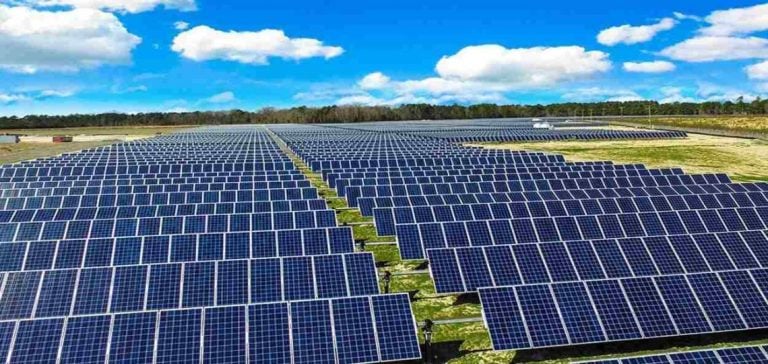Since the adoption of the Inflation Reduction Act (IRA) by President Joe Biden in August 2022, the momentum of solar energy in the United States has seen an unprecedented acceleration. This massive financial support plan has quintupled the country’s solar panel production capacity. At the same time, solar capacity additions have dominated the energy sector throughout 2024, accounting for 99.6% of new installations in August of this year, according to data from the Federal Energy Regulatory Commission (FERC).
A Boom in Domestic Production
The U.S. now has over 45 GW of solar module manufacturing capacity, sufficient to meet a large part of national needs by 2025. This growth is supported by substantial investments: $34 billion has been poured into solar factories across the country, creating nearly 40,000 jobs, according to the Solar Energy Industries Association. Major players such as First Solar and Hanwha Q Cells USA have opened new plants, significantly increasing their national production capacity.
At the same time, solar energy has become the top source of new energy capacity in the U.S., with 16,546 MW installed between January and August 2024. Forecasts from S&P Global Commodity Insights indicate that solar could add 36 GW of front-of-meter (FOM) capacity this year and continue dominating capacity additions through at least the end of the decade.
Persistent Supply Chain Challenges
Despite this growth, several critical segments of the U.S. solar supply chain remain underdeveloped. The U.S. struggles to produce silicon ingots, wafers, and crystalline cells, which are essential for manufacturing solar panels. This shortage could create a bottleneck in the production chain, forcing U.S. companies to continue importing these components from Asian countries, particularly China and South Korea.
Domestic production costs also remain higher compared to imports, raising questions about the long-term viability of U.S. factories. Some industry players are calling for increased protection through tariffs on foreign solar products, while others believe such measures could slow the sector’s growth.
An Uncertain but Promising Solar Future
The future of U.S. solar production is partly tied to political issues. The results of the upcoming elections may determine the future direction of policies supporting domestic production and tariffs on imports. For now, companies like First Solar and Qcells continue to invest heavily in the U.S., strengthening the country’s position in renewable energy.
By 2027, FERC predicts that solar capacity could reach 91 GW, representing about 15% of the country’s installed capacity. With the gradual shutdown of coal and natural gas plants, renewable energies—primarily solar and wind—are expected to account for over 36% of installed capacity in the U.S., radically transforming the national energy mix.






















